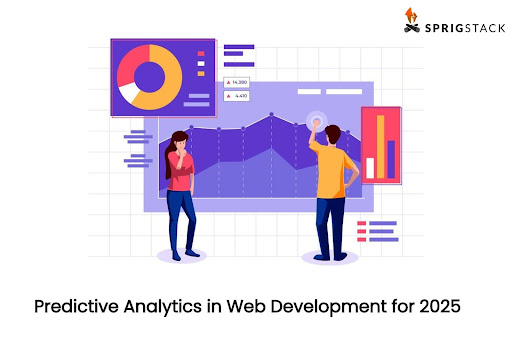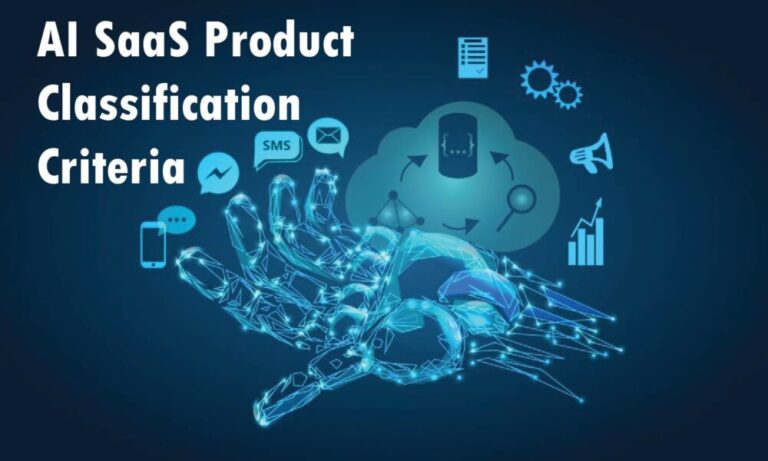Predictive Analytics In Web Development For 2025
Building a fantastic website isn’t enough in today’s digital world, where things change quickly. Businesses want sites that know what users want before they even ask for it. You can use predictive analytics to help with this. It’s changing how people plan, build, and run websites. Predictive analytics is becoming necessary for any web development agency that wants to win in 2025.
Predictive analytics guesses how people will act in the future by using data from past users and machine learning models. It makes websites smarter by letting them offer personalized content, product ideas, and other things to each user. As a result? More interaction, more sales, and an easier journey for users. Plus, it helps writers make better decisions before they cause problems.
Thanks to the growing power of AI and data science, predictive analytics are now more accurate and available than ever. Businesses are starting to expect these features to be normal in website creation as 2025 goes on.
A cutting-edge web development company can provide much more than just design or code; it can also provide results based on data. Predictive analytics is already here and is the future of building websites.
What is Predictive Analytics?
Predictive analytics uses data, algorithms, and machine learning to guess what will happen in the future. It doesn’t just tell you what happened; it also helps you guess what will happen next.
In this case, it can answer:
- Who is most likely to click on a product?
- Who might visit the page and then leave without doing anything?
- At what time of day do the most sales happen?
These answers help web designers and marketers make smarter and better websites.
Why Predictive Analytics Matters in Web Development
Today, predictive analytics is becoming more and more important in web creation. Here are some of the main reasons why:
- Better Personalization: With predictive tools, sites can show the right material to the right people at the right time. Customization makes the experience feel more natural and meaningful for visitors.
- Improved User Experience: When a website can guess what visitors want, things are easier for them. Users are happier and more engaged when they can find what they need more quickly.
- Faster Decision-Making: Instead of waiting weeks for the results of an A/B test, predictive models can give you information immediately. They do so by looking at patterns and behaviors from the past.
- Proactive Problem Solving: Analytics can show problems that are likely to happen, like slow speed or drop-off spots, before they affect the user. This way, developers can fix these problems quickly.
How a Web Development Firm Can Use Predictive Analytics
Adopting predictive analytics means that a web development firm has to change how it plans, builds, and manages websites. You can use it in the following ways at different stages:
- During Planning:
- By looking at past data, determine what benefits people are likely to use.
- To help you make decisions about hosting and technology, guess how much traffic you think will occur.
- During Design:
- Look at which style types work best for different groups of users.
- Guess which images or calls to action will work best.
- During Development:
- Write code for parts that change based on how you think the user will behave.
- Add machine learning models that can change things instantly.
- Post-Launch:
- Keep an eye on predicted measures to keep getting better.
- Suggest material or goods to users based on how users interact with your site.
In a smart web development business, they don’t just build the site and hand it off; they keep improving it with data from predictive tools.
Tools That Enable Predictive Web Development
In the year 2025, many tools will make it easier for developers to use predictive analytics:
- Google BigQuery ML: Lets you use SQL to build prediction models.
- Mixpanel: Keeps track of how users behave and gives you information based on AI.
- Hotjar and Crazy Egg: Use heatmaps and trip tracking to guess what visitors will do.
- Adobe Sensei: Uses machine learning to give users unique experiences.
With these tools, companies can add predictive features without starting from scratch.
Examples of Predictive Features on Modern Websites
When used in real life, predictive analytics can help with the following aspects of web development:
- E-commerce: Suggesting goods based on how you’ve browsed in the past.
- SaaS platforms: Predicting user turnover and offering ways to stop it.
- News sites: Suggest which stories users should read next.
- Travel portals: Guessing which places will be popular based on the time of year and where they are.
There’s more to these features than meets the eye. They’re tools that directly boost conversion, connection, and customer trust.
Challenges in Using Predictive Analytics
Predictive analytics is powerful, but it also has some drawbacks:
- Data Quality: Predictions will also be bad if the data used is bad. Agencies must ensure the info is correct, organized, and valuable.
- Privacy Concerns: GDPR and other stricter data laws require agencies to handle user data safely and responsibly.
- Model Complexity: To make correct models, you must know a lot about statistics and data science. These skills might not be available in-house at every web development company.
Even with these problems, the benefits make it worth it, especially in the internet market where competition is high.
The Future: Predictive UX and Adaptive Websites
“Adaptive websites” are becoming more popular in 2025. These websites change their layout, information, or how you connect with them based on what they think the users will do. This trend will likely continue, making predictive UX an essential part of building websites.
These tools are ready for the future:
- Landing pages that change based on what the reader wants.
- Chatbots that can guess what questions people will ask.
- Instant changes to page features based on the likelihood of response.
If a web development firm wants to make sure its services will still be helpful in the future, it needs to start adding these cutting-edge features now.
Conclusion
Predictive analytics isn’t just a nice-to-have anymore; it’s a must-have for making websites better and more user-friendly. Websites can meet user needs faster, keep them on longer, and get them more involved if they know how people will behave in the future.
Not only will companies want adaptable design in 2025, but they will also want intelligent design. To meet this demand, a web development agency that uses predictive analytics will also be at the forefront of the digital revolution that will follow.
Keep an eye for more latest news & updates on Gravity Internet Net!






